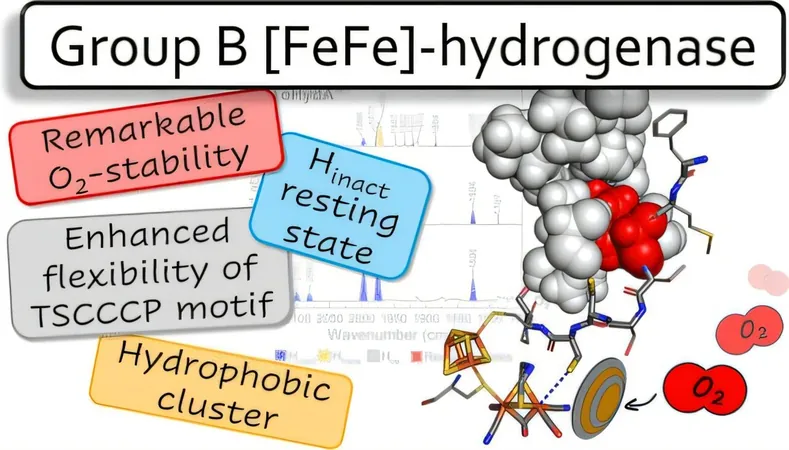
Revolution in Clean Energy: Scientists Unveil Oxygen-Stable Biocatalyst That Could Transform Hydrogen Production
2025-05-09
Author: Ming
In a groundbreaking discovery, researchers have isolated a new type of oxygen-stable [FeFe]-hydrogenase from a thermophilic bacterium, promising to enhance the efficiency of hydrogen production for green energy applications. This enzyme has shown remarkable resilience against air, a common obstacle that has hampered the industrial use of hydrogen-producing biocatalysts.
The Quest for Stability in Hydrogen Production
Led by the innovative minds from the Photobiotechnology group and the Center for Theoretical Chemistry at Ruhr University Bochum, Germany, the team turned their sights towards thermophilic bacteria thriving in extreme conditions. They identified *Thermosediminibacter oceani*, a bacterium that flourishes at scorching temperatures of around 70°C and harbors a promising [FeFe]-hydrogenase.
A Breakthrough in Oxygen Resistance
This new hydrogenase was not only produced and isolated but also exhibited exceptional thermostability and unprecedented oxygen stability—defying expectations by remaining intact even after several days of exposure to air.
"Witnessing such stability is truly exhilarating," remarked Subhasri Ghosh, the lead author of the study.
Unlocking the Secrets of Stability
To dive deeper into the workings of this remarkable enzyme, researchers employed a range of advanced techniques, including hydrogen production measurements, spectroscopy, site-directed mutagenesis, and cutting-edge machine learning structure predictions combined with molecular dynamics simulations. Through this multifaceted approach, they uncovered that the presence of a sulfur-containing amino acid near the catalytic center plays a pivotal role in ensuring oxygen stability.
Moreover, a cluster of hydrophobic amino acids was found to influence the dynamics of the protein, further enhancing its resistance to oxygen degradation.
Future Implications for Green Hydrogen Energy
Professor Lars Schäfer emphasized the potential applications of these findings: "We're optimistic that these insights could pave the way for engineering other more oxygen-stable [FeFe]-hydrogenases in the future." Professor Thomas Happe, who spearheaded the project, expressed similar confidence in the implications of this discovery for the realm of renewable energy.
This breakthrough not only boosts the potential for efficient hydrogen production but also represents a significant leap towards sustainable energy solutions globally.





 Brasil (PT)
Brasil (PT)
 Canada (EN)
Canada (EN)
 Chile (ES)
Chile (ES)
 Česko (CS)
Česko (CS)
 대한민국 (KO)
대한민국 (KO)
 España (ES)
España (ES)
 France (FR)
France (FR)
 Hong Kong (EN)
Hong Kong (EN)
 Italia (IT)
Italia (IT)
 日本 (JA)
日本 (JA)
 Magyarország (HU)
Magyarország (HU)
 Norge (NO)
Norge (NO)
 Polska (PL)
Polska (PL)
 Schweiz (DE)
Schweiz (DE)
 Singapore (EN)
Singapore (EN)
 Sverige (SV)
Sverige (SV)
 Suomi (FI)
Suomi (FI)
 Türkiye (TR)
Türkiye (TR)
 الإمارات العربية المتحدة (AR)
الإمارات العربية المتحدة (AR)